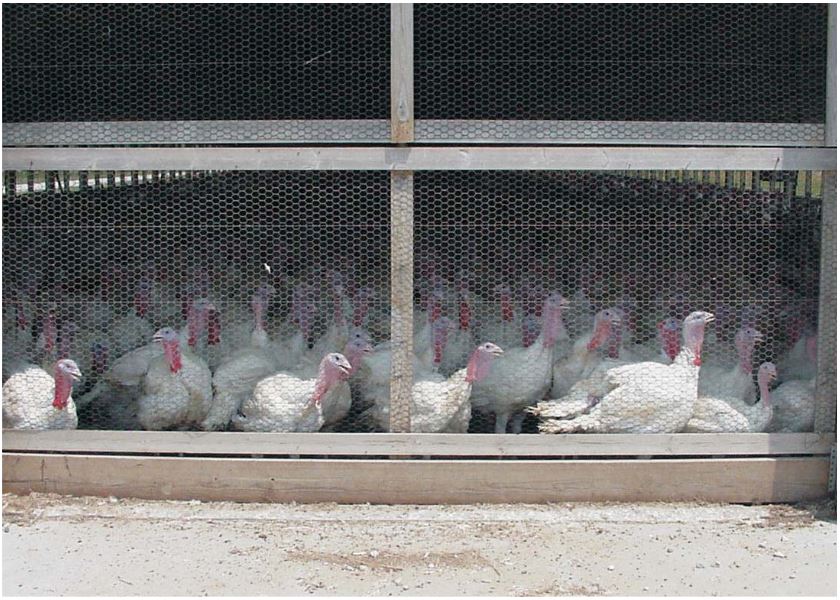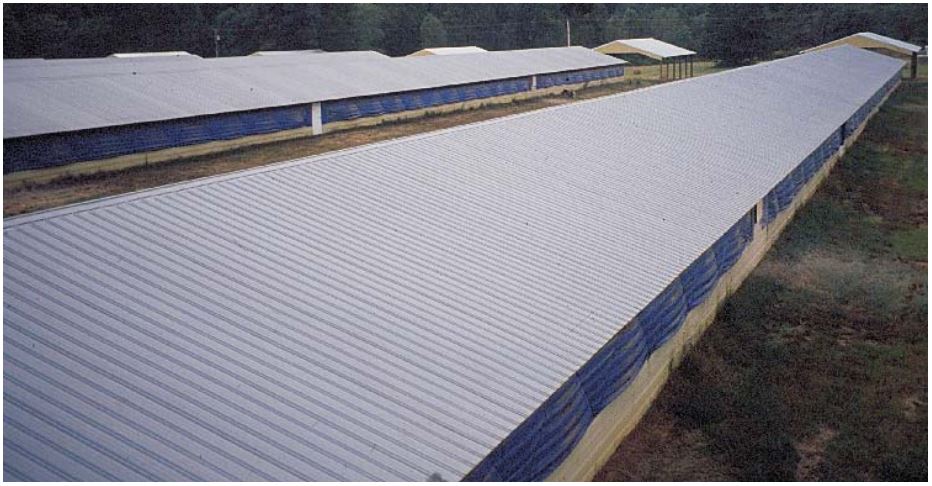Every year, environmental issues seem to gain emphasis nationally and internationally as the importance of a cleaner environment and respect for pollution prevention practices receive increasing public support. The matter is most pressing to livestock and poultry producers because as environmental sophistication grows so does the focus on nonpoint source pollution. What is more, this deeper environmental sensitivity has occurred simultaneously with an extraordinary increase in the size of the poultry industry and its concentration in certain regions near processing and packing plants. The potential for adverse environmental impact appears greater as a result of the industry’s trend to grow ever larger numbers of birds on smaller areas of land.

Understanding Animal Wastes and the Environment
Good waste management practices are essential for preventing the transport of sediments, nutrients, and bacteria into groundwater, rivers, and streams — that is, to prevent pollution — and to protect agricultural resources. The latter aspect of waste management ensures that growers will get the best return on their investments since animal waste is also a valuable resource, a collection of by-products that can be reclaimed for other uses.
The term “poultry waste” generally refers to manure: the feces and uric acid excreted by the growing birds. “Litter,” on the other hand, refers to manure and used bedding materials. Other wastes associated with poultry production include washwater, storm (and muddy) water runoff, and the carcasses of dead birds and spent hens. Processing wastes include other rendering and lagoon residuals.
These same materials, however, contain (1) valuable nutrients that can reduce the need for commercial fertilizers and increase plant yield; and (2) organic matter that can improve soil quality and extend its ability to hold water. Little wonder, then, that what happens to these by-products can be good or bad for the industry and for the environment.
On the one hand, poultry waste can do a lot of good. They can be used as fertilizer, soil enhancers, cattle feed, or energy. Poultry producers can add value to these products — and prevent them from contaminating surface and groundwater — by using proven, acceptable methods of collection, storage and handling, treatment, disposal, and management. All such beneficial uses depend on proper management. Without such management, the value of the waste will decline rapidly, even as its potential for adversely affecting the environment and water quality steadily rises.
Pollution is Not Inevitable
Poultry growers, whether their operation is consolidated or diversified, need not produce any pollution outside the system. Pollution occurs only when litter is mismanaged — for example, when it is land applied in quantities that exceed plant needs, or when the ground is wet or frozen. As a result of such applications, potentially contaminating substances become “available” to the environment. If they also become “detached” from the site, for example, by being adsorbed to sediments or dissolved in water, they can be “transported” off-site. Transport occurs when contaminants in the animal waste (the unused nutrients, bacteria, or other elements in the litter) are released to surface drainage or infiltrate beneath the soil surface in groundwater recharge areas.
To control and prevent pollution, poultry growers need to understand how the value of such by-products can be enhanced and maintained. The value in poultry by-products and their potential to cause either point or nonpoint source pollution have the same origin. That is, the waste and dead birds contain nutrients and salts, suspended materials, the various products of biological reactions, and microorganisms. These elements can be beneficial to the grower, other farmers, the environment, or they can be harmful.

Nutrients and Salts
Poultry manure is a valuable nutrient for grain and fiber crops, forage crops, fruits, and vegetables. However, if manure, litter, dead birds (as compost or as buried carcasses), and/or wastewater are not properly protected and utilized, water can be contaminated from the release of excess nitrogen and phosphorus into the environment.
Nitrogen is an essential plant nutrient but, in excess, it can be harmful. High concentrations of nitrate in drinking water can affect human health, especially in infants and children. Ammonia in small quantities is toxic to fish and aquatic organisms, and high concentrations of nitrate in drinking water can also have significant effects on young chickens.
When nitrogen and phosphorus concentrations in waterbodies rise too high, algae and rooted aquatic plants take over, prematurely aging and choking the waterbody and creating undesirable conditions — odors, offensive taste, and discoloration — all of which can make the water unfit for consumption or recreational and aesthetic use. Further, these eutrophic conditions can kill fish, clog water treatment plant filters, and lead to the growth of blue-green algae, a species that can be fatal to livestock.
Because nitrate-nitrogen is highly mobile, it can leach into groundwater and flow with stormwater runoff into surface waters. If too much poultry manure and litter are used as fertilizer, nitrogen and phosphorus concentrations in nearby waters are likely to be high. Soil erosion also increases the amount of phosphorus in surface waters. Excessive phosphorus in soil, above 800 mg/L, may become soluble and move into groundwater. Phosphorus concentrations may vary, depending on the type of soil and its organic content.
Calcium and sodium salts are added to poultry feeds to help the birds maintain chemical balance and nutrition. Excess salts pass through the animals and are eliminated in manure. Sometimes, when the waste accumulates, the salts leach into groundwater and enter surface water through unprotected runoff. There they alter the water’s taste or harm freshwater plants and animals.
Suspended Materials
When suspended matter from poultry wastes reach surface water, the waterbody not only looks unattractive — the quality of the water invariably suffers. The suspended material reduces the penetration of sunlight and therefore slows the production of oxygen. The result is an oxygen demand that reduces the levels of dissolved oxygen in the water. It also clogs fish gills, makes it difficult for sight-feeding fish to find food, and settles over fish spawning areas.
Products or Biological Reactions
In a natural environment, the breakdown of organic matter, such as poultry waste, is a function of complex, interrelated, and mixed biological populations. All substances of animal or vegetable origin contain carbon and are, therefore, organic. Organic matter is converted to simple com- pounds by naturally occurring microorganisms. These simple compounds may be other forms of organic matter or they may be nonorganic compounds or gases, such as nitrates, orthophosphates, ammonia, and hydrogen sulfide. A biological reaction occurs when manure or other organic matter is added to water and anaerobic or aerobic organisms begin the decaying process. Aerobic bacteria (oxygen-requiring organisms) consume free oxygen and produce carbon dioxide gas. Under anaerobic conditions (without oxygen), methane, amines, and sulfides are produced.
Microorganisms
Desirable and undesirable microorganisms live in our environment. Animal waste is a potential source of some 150 disease-causing organisms or pathogens. These organisms include bacteria, viruses, fungi, protozoa, and parasites. Examples of undesirable microorganisms include Salmonella, Cryptosporidium, Giardia, Listeria, coliform, New Castle (virus), ringworm, coccidiosis, and Ascaris.
When found in water or waste, these pathogens pose significant threats to humans and other animals. They can infect humans and animals through drinking water, contact with the skin, or consumption of fish or other aquatic animals. Most pathogens die relatively quickly. However, under the right conditions, they may live long enough to cause problems. They may persist longer in groundwater than in surface water.
Producers can prevent poultry by-products or waste from contaminating water. However, environmental needs and solutions are site-specific and regional in nature. In some cases, state regulations and permitting requirements may be more stringent than federal regulations. Therefore, local sources of information, including industry associations, state departments of environmental protection and public health, and USDA Natural Resources Conservation Service and Cooperative State Research, Extension, and Education Service offices should be consulted about poultry waste or by-products that affect water quality.
References
Blake, J.P., J.O. Donald, and J.E. Hairston. 1990. Pre-venting Ground and Surface Water Contamination by Poultry Waste. DTP Circular 11/90-010. Alabama Cooperative Extension Service. Auburn University, Auburn, AL.
Goan, H.C., and J. Jared. 1991. Poultry Manure — Proper Handling and Application to Protect Our Water Resources. PB-1421. Tennessee Cooperative Extension Service, University of Tennessee, Knoxville.
Magette, W.L., and R.A. Weismiller. 1991. Nutrient Management for Water Quality Protection. BFS-3. Maryland Cooperative Extension Service, University of Maryland, College Park.
U.S. Department of Agriculture. 1992. Agricultural Waste Management Field Handbook, Part 651. Soil Conservation Service. Washington, DC.